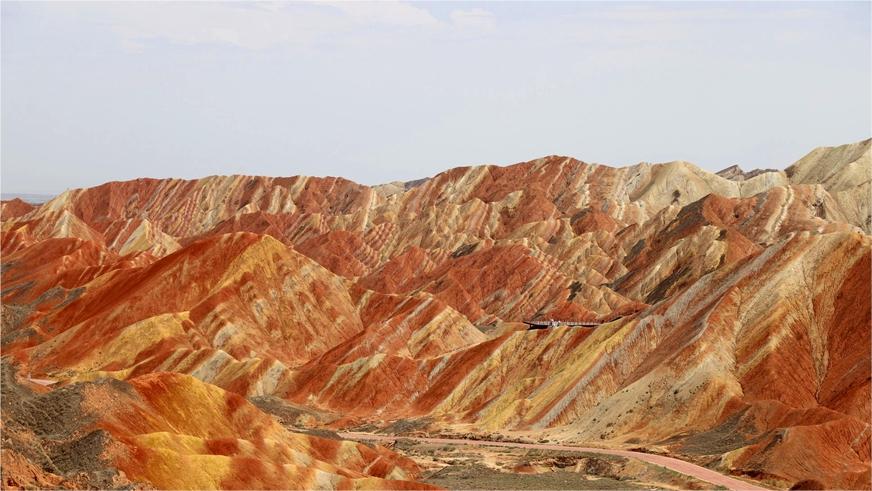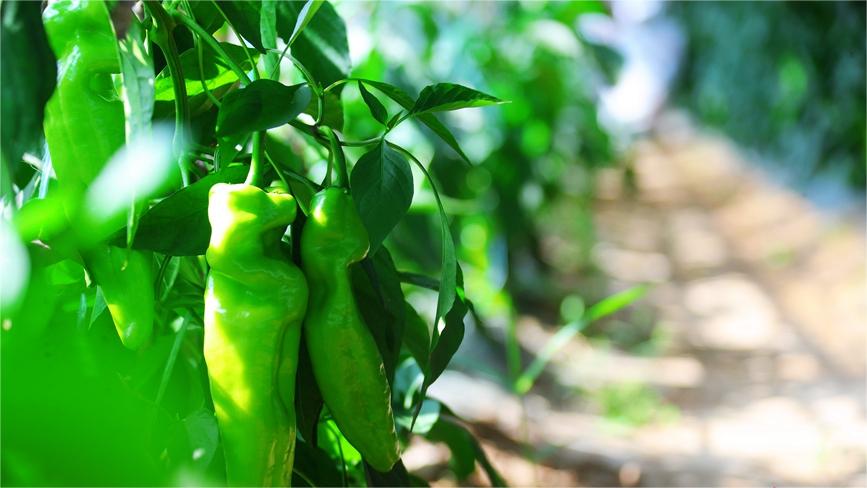Innovative method, tool contribute to sand control in Shapotou, NW China's Ningxia
Shapotou in Zhongwei city, northwest China's Ningxia Hui Autonomous Region is situated on the southeastern edge of the Tengger Desert, the fourth largest desert in China. Shapotou is notorious for being one of the areas most heavily impacted by sandstorms in history.
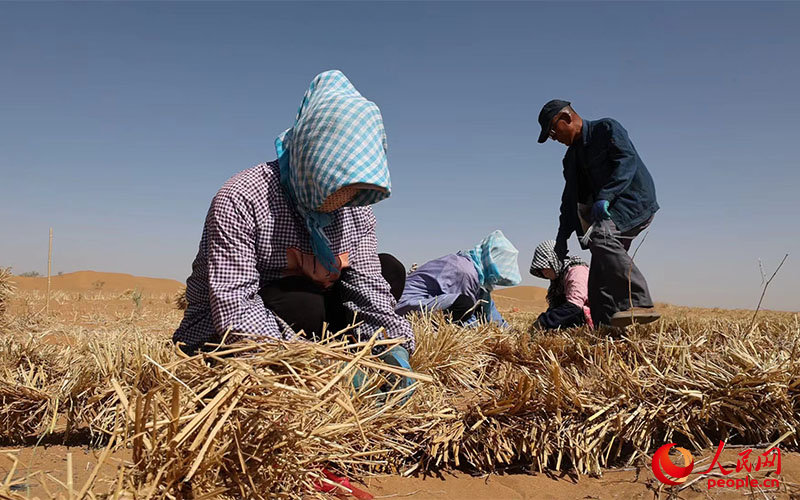
Workers make straw checkerboards, which are used to stabilize sand and prevent dunes from shifting. (People's Daily Online/Li Tiantian)
In 1954, China began constructing the Baotou-Lanzhou Railway to connect northwest and north China. With a total length of 990 kilometers, the railway traverses desert for 140 kilometers, navigating through sand dunes that can reach heights of up to 100 meters in Shapotou.
To ensure smooth train operations across the sandy expanse, researchers from the Chinese Academy of Sciences conducted extensive experiments and explorations. Their efforts led to the development of a sand stabilization model that eliminated the need for irrigation, along with the proposal of a railway sand control system. Eventually, they found that a grid-shaped grass sand barrier proved to be highly effective, and developed straw checkerboards to stabilize the sand and prevent dunes from shifting.
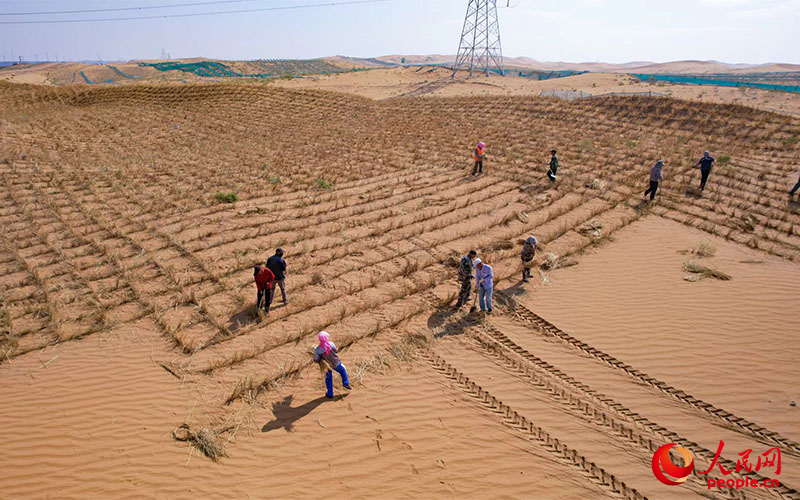
Photo shows straw checkerboards in Shapotou, Zhongwei city, northwest China's Ningxia Hui Autonomous Region. (People's Daily Online/Li Tiantian)
By implementing straw checkerboard sand barriers on both sides, the desert railway, once believed to have a maximum lifespan of only 30 years, has been able to operate smoothly for over 60 years.
Between 1950 and 1985, desert control workers implemented a sand control and protection system along a 55-kilometer stretch of the Baotou-Lanzhou Railway. This system covered multiple zones within a 500-meter radius on both sides of the railway.
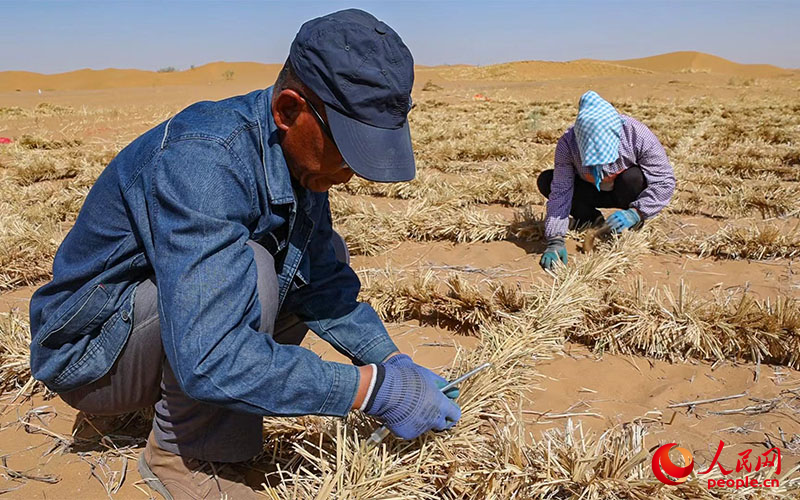
Workers make straw checkerboards, which are used to stabilize sand and prevent dunes from shifting. (People's Daily Online/Li Tiantian)
Creating straw checkerboards was the first step in sand stabilization. Planting seedlings and grass within the checkerboards was necessary to establish permanent sand stabilization barriers.
Tang Ximing, chief engineer at a state-owned forestry farm in Zhongwei, has dedicated over 30 years of his life to desert control work.
In 2017, Tang crafted a steel tool that features two horizontal bars at the front tip. This innovative tool increases the survival rate of afforestation by 25 percent and reduces labor costs by 50 percent. It has been widely promoted and used in afforestation projects in regions such as Gansu Province and Xinjiang Uygur Autonomous Region.
Photos
Related Stories
- In pics: Aohan Banner in Inner Mongolia builds grass grids for sand control
- China's magical straw checkerboard: turning desert into lush land
- China's Inner Mongolia promotes science-based desertification control
- China's Qinghai restores 574,000 hectares of desertified land
- Workers stationed in China's Inner Mongolia for railway sand control
Copyright © 2024 People's Daily Online. All Rights Reserved.






